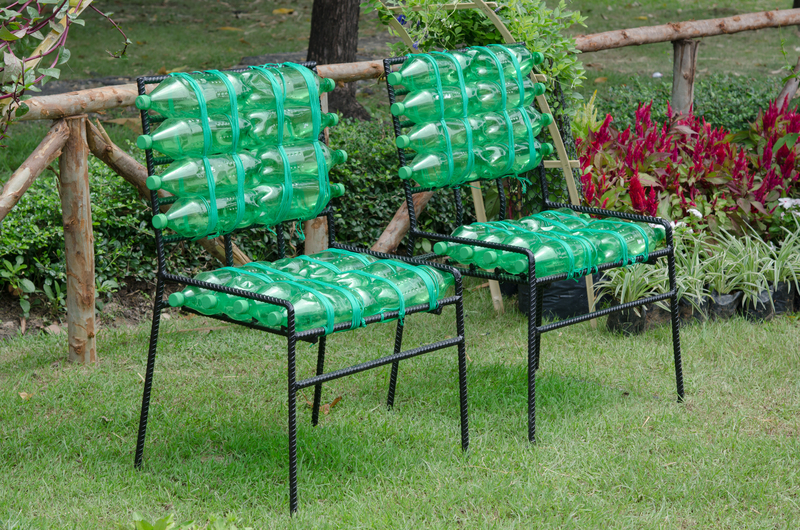Diving Deep Into the World of Builders Skips: A Comprehensive Guide
Builders skips are an essential feature of construction and renovation projects, serving as the backbone for effective waste management. Whether you're a professional contractor, a homeowner embarking on a renovation, or simply curious about the skip hire industry, understanding the nuances of builders skips can dramatically improve project efficiency and environmental responsibility.

What Are Builders Skips?
A builders skip is a large, open-topped container designed for the collection and transportation of bulky waste materials. Commonly spotted at construction sites, these skips are iconic symbols of progress, efficiency, and cleanliness.
- Typically ranging from 6 to 8 yards in size
- Crafted for heavy-duty use, ideal for mixed construction debris
- Engineered to withstand harsh materials like bricks, rubble, and soil
Choosing the correct builders skip size is crucial in managing cost, space, and compliance with environmental laws.
Different Types of Skips for Building Projects
While builders skips are popular, there are various types available, each catering to different project requirements:
- Mini Skips (2-3 yards): Best for small domestic projects or garden clearance.
- Midi Skips (4-5 yards): Ideal for moderate renovation work or larger domestic tasks.
- Builders Skips (6-8 yards): The industry standard for most construction work.
- Large Skips (10-16+ yards): Perfect for major commercial or industrial projects.
Why Builders Skips Are Vital for Construction
There are several reasons why builder's skips play an integral role in construction and demolition sectors.
Main Benefits of Using Builders Skips
- Saves Time: Easily dispose of large volumes of waste quickly and efficiently.
- Reduces Hazards: Keeps the site tidy, minimising risks of accidents and injuries.
- Sustainability: Encourages recycling by segregating different types of waste.
- Cost-Effective: Reduces the need for multiple trips to local disposal facilities.
- Regulatory Compliance: Proper skip hire ensures adherence to waste disposal regulations.
How to Choose the Right Builders Skip for Your Project
Selecting the right skip requires careful consideration of the project's scale and types of waste expected. Here's what you should keep in mind:
1. Project Scale
Small projects such as bathroom or kitchen renovations typically require a mini or midi skip. For larger projects like home extensions or commercial construction, a 6-8 yard builders skip is usually perfect.
2. Type of Waste
- Inert waste: Bricks, soil, concrete, and rubble.
- General mixed waste: Wood, metal, plastics, and packaging materials.
- Prohibited items: Asbestos, refrigerators, tyres, and hazardous waste, which require special handling.
3. Space and Access
You must have enough clear, stable space for the skip and suitable access for the delivery vehicle. Be sure to check for:
- Low-hanging branches or wires
- Narrow driveways
- On-street permit requirements if placing a skip on public land
Understanding Builders Skip Sizes & Capacities
Different skip sizes are designed for specific needs. Here's a quick guide:
| Skip Size (Yards) | Approximate Capacity (Bin Bags) | Typical Uses |
|---|---|---|
| 2-3 yard Mini Skip | 20-30 | Small DIY jobs, garden clearances |
| 4-5 yard Midi Skip | 40-60 | Bathroom or kitchen refits |
| 6-8 yard Builders Skip | 60-100 | General building waste, construction sites |
| 10-16 yard Large Skip | 120-180 | Large clearance projects, bulky waste |
How to Hire a Builders Skip
Hiring a builders skip is a straightforward process, but attention to detail can save you time, money, and hassle.
Step-by-Step Guide to Skip Hire
- Determine your waste type and volume: Assess your project to choose the right skip size and type.
- Contact a reputable skip hire company: Look for those with proper waste carrier licences and good reviews.
- Arrange permits if necessary: If your skip will be placed on public land, you'll need a council permit.
- Schedule delivery and collection dates: Plan skip hire around your project timeline for maximum efficiency.
- Load the skip carefully: Fill it evenly, and don't overfill beyond the marked level.
- Collection and disposal: Your supplier will collect the skip and handle responsible waste processing.
Builders Skips and Environmental Responsibility
Proper management of building site waste is now more crucial than ever. Here's how builders skips contribute to sustainability:
- Recycling rates: Most skip hire companies divert a high percentage of waste from landfill by sorting and recycling materials.
- Reduced illegal dumping: Skips help prevent fly-tipping, keeping communities cleaner.
- Sustainable material recovery: Inert wastes like concrete and metals can be reused in new construction projects.
What Happens to Waste in a Builders Skip?
After collection, your skip is transported to a recycling centre where materials are separated. Metals, wood, aggregates, and plastics are sorted and processed for reuse, drastically reducing the environmental impact of construction activities.
Cost Considerations When Hiring a Builders Skip
The price of builders skip hire is influenced by several factors:
- Size of skip
- Duration of hire
- Type of waste disposed
- Location (especially in city centres where permits are needed)
- Council permit fees
*Tip:* Compare quotes from multiple suppliers and check for hidden charges like overweight fines or long-term hire surcharges.
Frequently Asked Questions About Builders Skips
1. What can I put in a builders skip?
Allowed: Bricks, soil, hardcore, metals, wood, furniture, plastics, non-electrical fittings.
Prohibited: Asbestos, electricals, fridges, tyres, medical or hazardous waste, gas cylinders, solvents.
2. Can I mix different types of waste in my skip?
Most suppliers accept mixed waste, but separating hazardous materials is mandatory. Always clarify with your hire company.
3. Do I need a permit for a builders skip?
If placing on private property, no permit is required. If placing on a public road or verge, a permit from your local council is essential.
4. How long can I keep the skip?
Most hire periods range from 1 week to 14 days, but longer arrangements can be made for large projects.
5. How should I fill a builders skip?
- Distribute weight evenly throughout the skip
- Do not fill above the rim
- Break down bulky items to save space
- Separate recyclable materials if possible
Builders Skips Safety Tips
Safety should always be a top priority when using builders skips:
- Never enter or climb inside a skip
- Do not burn waste in a skip
- Ensure the skip is visible and, if on public land, has reflective markings and safety lamps at night
- Keep dangerous items (e.g. sharp metal, glass) covered if possible

Builders Skips: Industry Innovations and Trends
The builders skip industry is not just about waste disposal. It is evolving with innovations to meet new challenges:
- Smart skips and tracking: GPS-equipped skips for theft prevention and logistics management
- Eco-friendly solutions: Manufacturers are designing skips from recycled materials and with better stacking efficiency
- On-site segregation: Providing separate skips for rubble, metals, and general waste to increase recycling rates
Conclusion: Why You Should Consider Builders Skips for Your Next Project
In today's construction landscape, builders skips are more than just large bins--they are critical tools for fresh starts, cleaner environments, and improved site safety.
Efficient waste management saves money, time, and reduces environmental impact: Whether you're tackling a home renovation or heading up a commercial build, understanding the world of builders skips arms you with the knowledge to make informed, responsible decisions.
Make your next construction project a success--hire the right builders skip, follow environmental best practices, and contribute to a sustainable future!